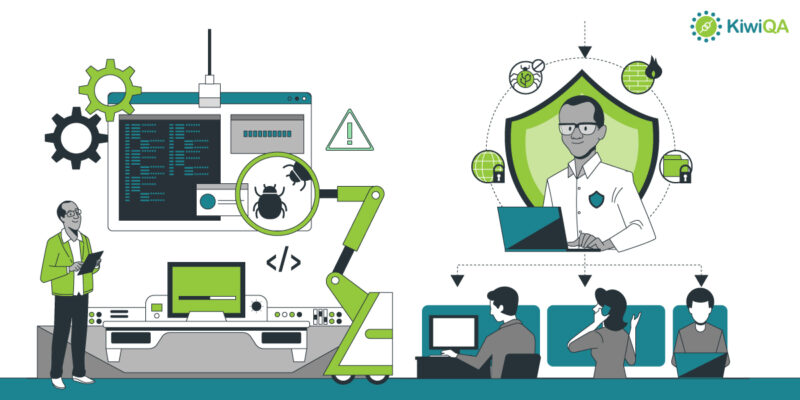
Introduction
In the rapidly evolving field of software development, it is imperative to guarantee the calibre of programs. Poorly tested software can lead to major issues, including security vulnerabilities, system crashes, or an unsatisfactory user experience. To mitigate these risks, software testing has become an essential process in the software development lifecycle (SDLC).
In this article, we will dive into the fundamentals of software testing, exploring various methods, tools, and best practices that ensure software quality and reliability. By the end of this guide, you’ll have a solid understanding of how testing fits into software development and why it’s critical to every project’s success.
What is Software Testing?
Software testing is the process of assessing and confirming that a system or software application satisfies the necessary requirements. It aims to identify any bugs, defects, or issues that could negatively impact performance or functionality. Testing can be manual or automated, and it usually occurs throughout the development cycle, starting from the initial planning phase and continuing even after deployment.
Security: With cyber threats on the rise, testing ensures that the application is free from vulnerabilities that could be exploited by malicious actors.
Compliance: In certain industries (e.g., healthcare or finance), software must comply with strict regulatory standards. Testing guarantees adherence to these legal specifications.
Types of Software Testing
There are various approaches to software testing, each with its unique objectives and methods. Here’s an overview of the most common types of software testing:
1. Manual Testing
Without the use of automation tools, manual testing entails human testers carrying out test cases by hand. This type of testing is ideal for exploratory testing, where human insight and intuition are valuable for detecting subtle issues. Manual testing is useful in the following scenarios:
2. Automated Testing
Automated testing uses tools to execute test cases, compare actual outcomes with expected outcomes, and report on the results. This approach is best suited for repetitive tests, performance tests, and large-scale projects with frequent code changes.
Automation helps reduce testing time, minimize errors, and ensure consistent results. Some common types of automated testing include:
3. Non-Functional Testing
Non-functional testing evaluates the software’s performance, reliability, and security rather than its specific functionalities. It ensures the system meets certain non-functional criteria such as speed, scalability, and usability. Types of non-functional testing include:
Performance testing: Measures system speed, scalability, and stability.
Usability testing: Ensures the software is user-friendly and meets accessibility standards.
Security testing: Identifies potential vulnerabilities and ensures the application is protected against attacks.
4. Unit Testing
Testing individual software application parts or components is known as unit testing. Developers write test cases for specific functions or modules to ensure that each piece of code performs as expected. Unit testing is typically done early in the development cycle and is an important step in catching bugs before they affect other parts of the system.
Common Tools for Software Testing
To streamline the testing process, various software testing tools are used. These tools offer automation, bug tracking, reporting, and more. Here are a few well-liked tools for software testing:
1. Selenium
Selenium is one of the most widely used automation testing tools, primarily for web applications. It supports multiple programming languages like Java, Python, and C#, making it versatile and powerful for testing across different environments.
2. JIRA
JIRA is a popular tool for bug tracking, project management, and issue tracking. While not specifically a testing tool, it integrates well with testing frameworks to manage test cases and track defects throughout the SDLC.
3. JUnit
JUnit is a unit testing framework for Java-based applications. It helps developers test individual units of source code and ensures that each function operates correctly.
4. Apache JMeter
JMeter is a popular tool for performance and load testing. It is used to simulate multiple users accessing a web application to measure its response times, throughput, and stability under different loads.
1. Start Testing Early (Shift Left)
One of the most important principles of software testing is to start testing early in the development process. This practice, known as “shifting left,” involves conducting tests as soon as possible—ideally during the planning and development phases. Early testing helps catch bugs before they become more difficult and expensive to fix.
2. Automate Repetitive Tasks
Automation is key to efficient testing, especially when dealing with large-scale projects. Automating repetitive tasks like regression and performance testing saves time, reduces errors, and ensures consistency. However, not all tests should be automated—exploratory and usability testing are better suited for manual execution.
3. Prioritize Testing Efforts
Testing every possible scenario is impractical. Instead, prioritize your testing efforts based on risk, functionality, and user impact. High-risk areas that affect the core functionality of the application should be tested first.
4. Maintain a Test Environment
Having a stable and dedicated test environment is crucial for accurate testing results. Ensure the environment mirrors the production environment to catch issues that could arise when the software is live.
Read also: Google Workspace for Education with Natural Referencing
Conclusion











